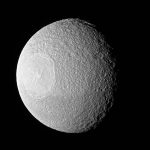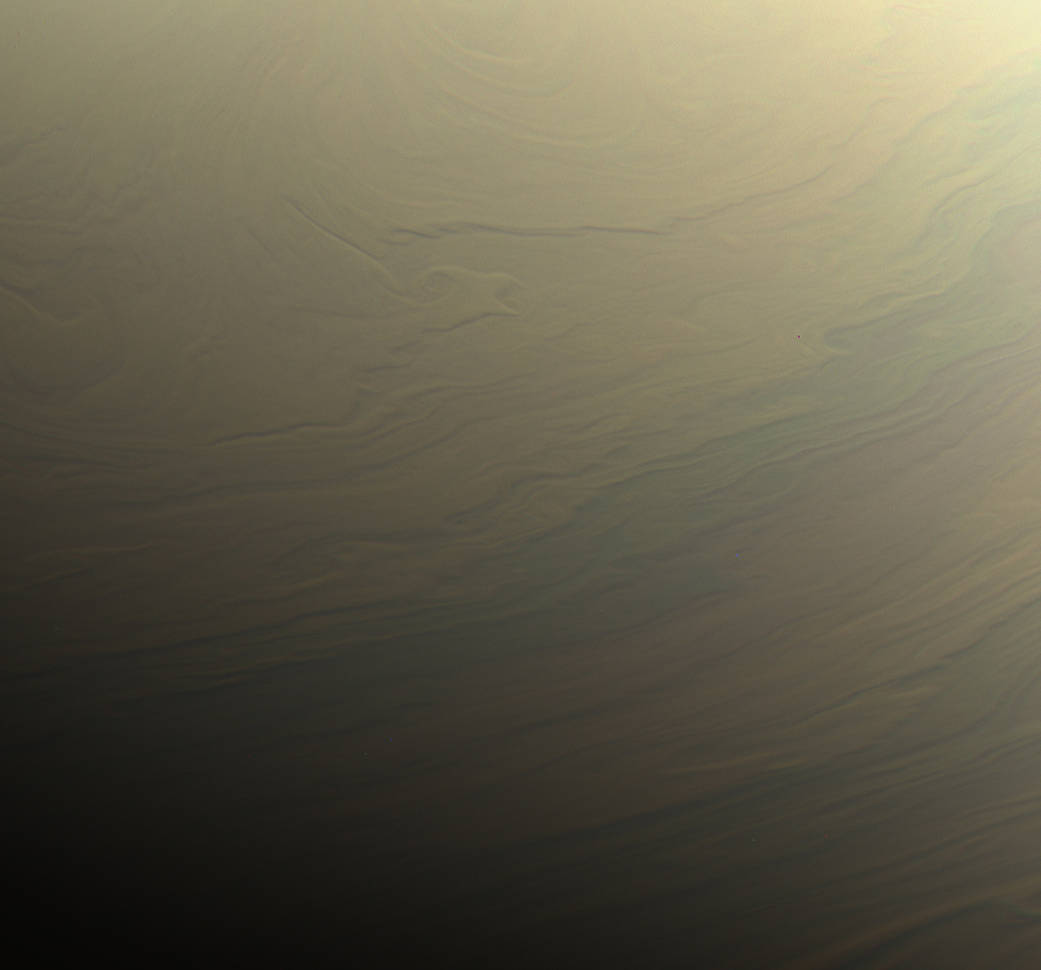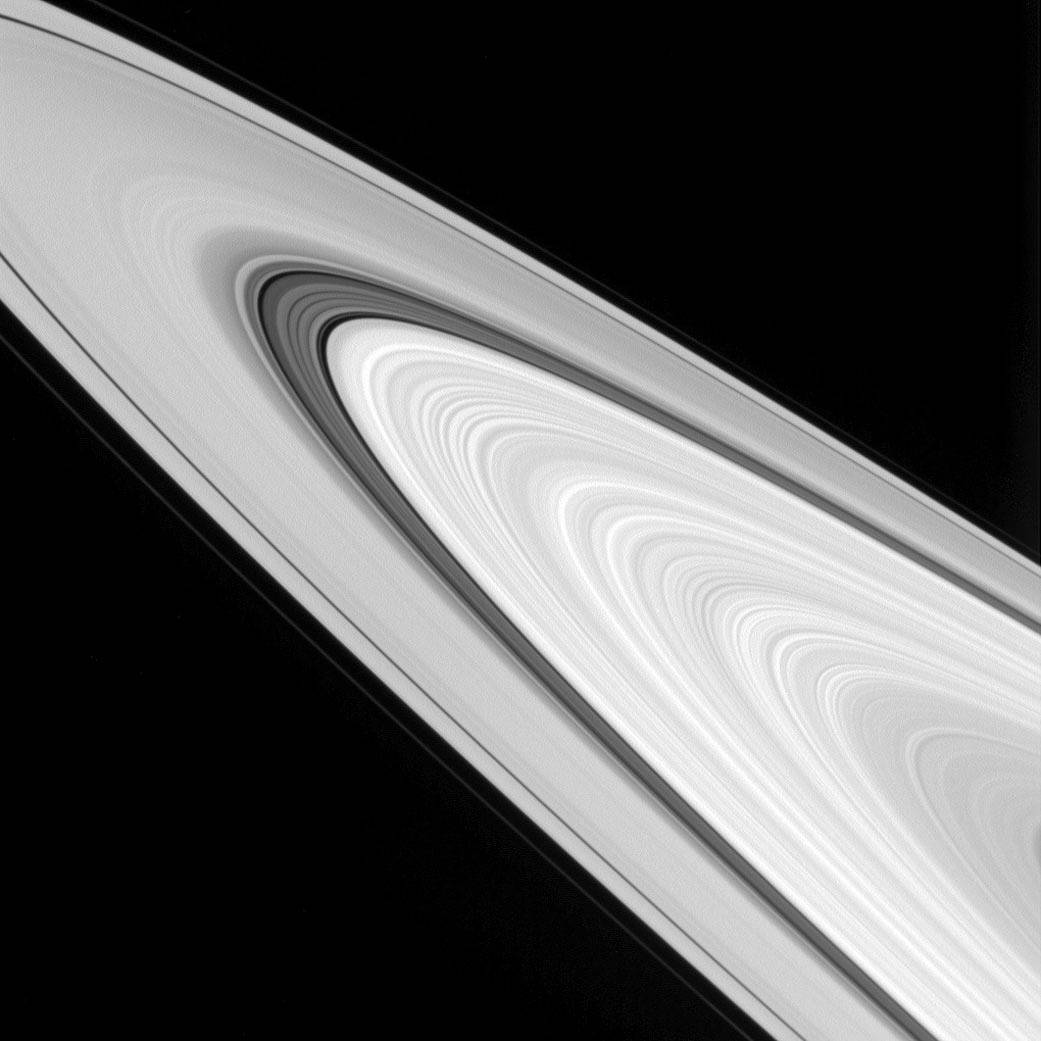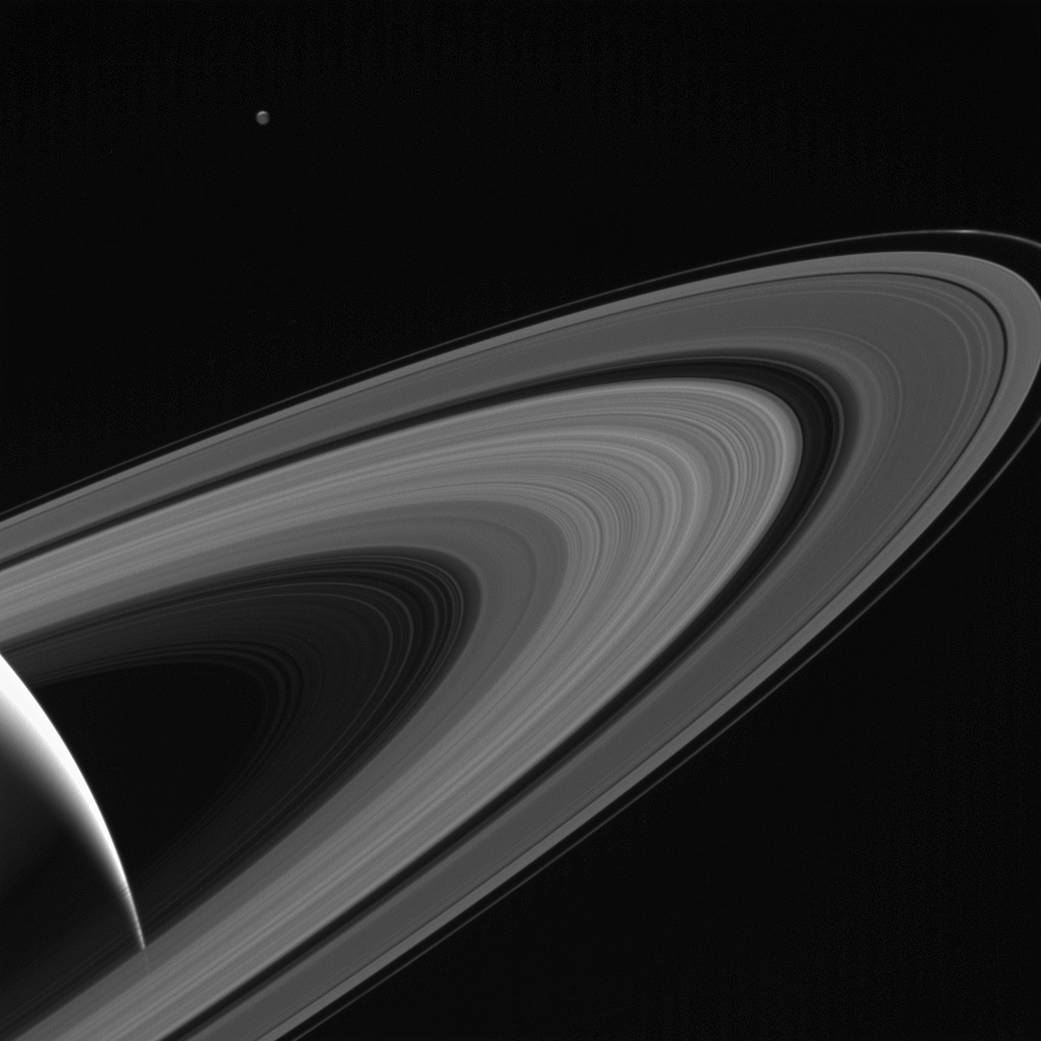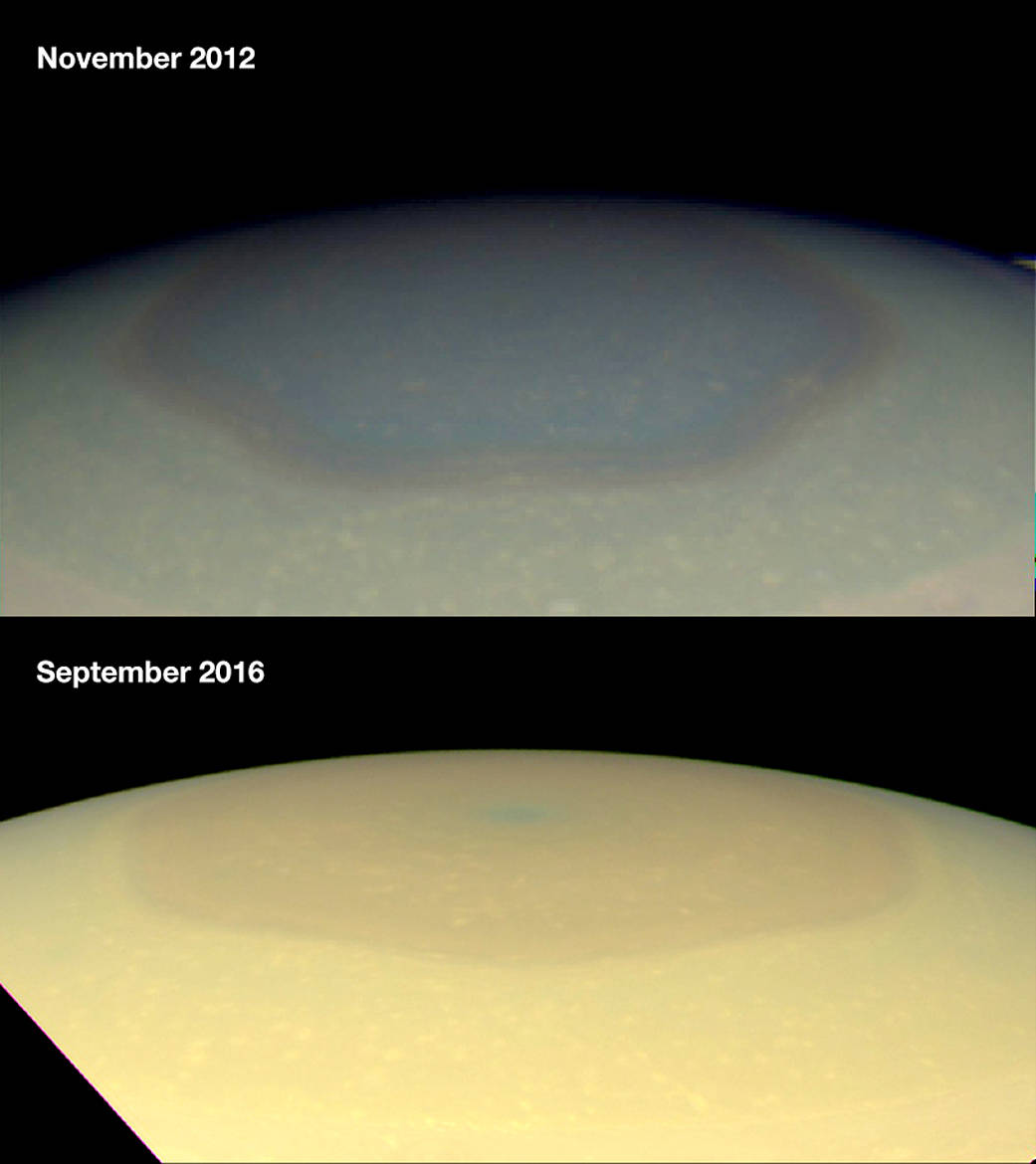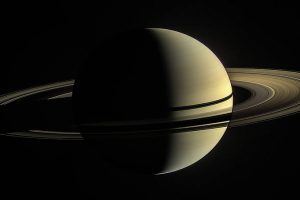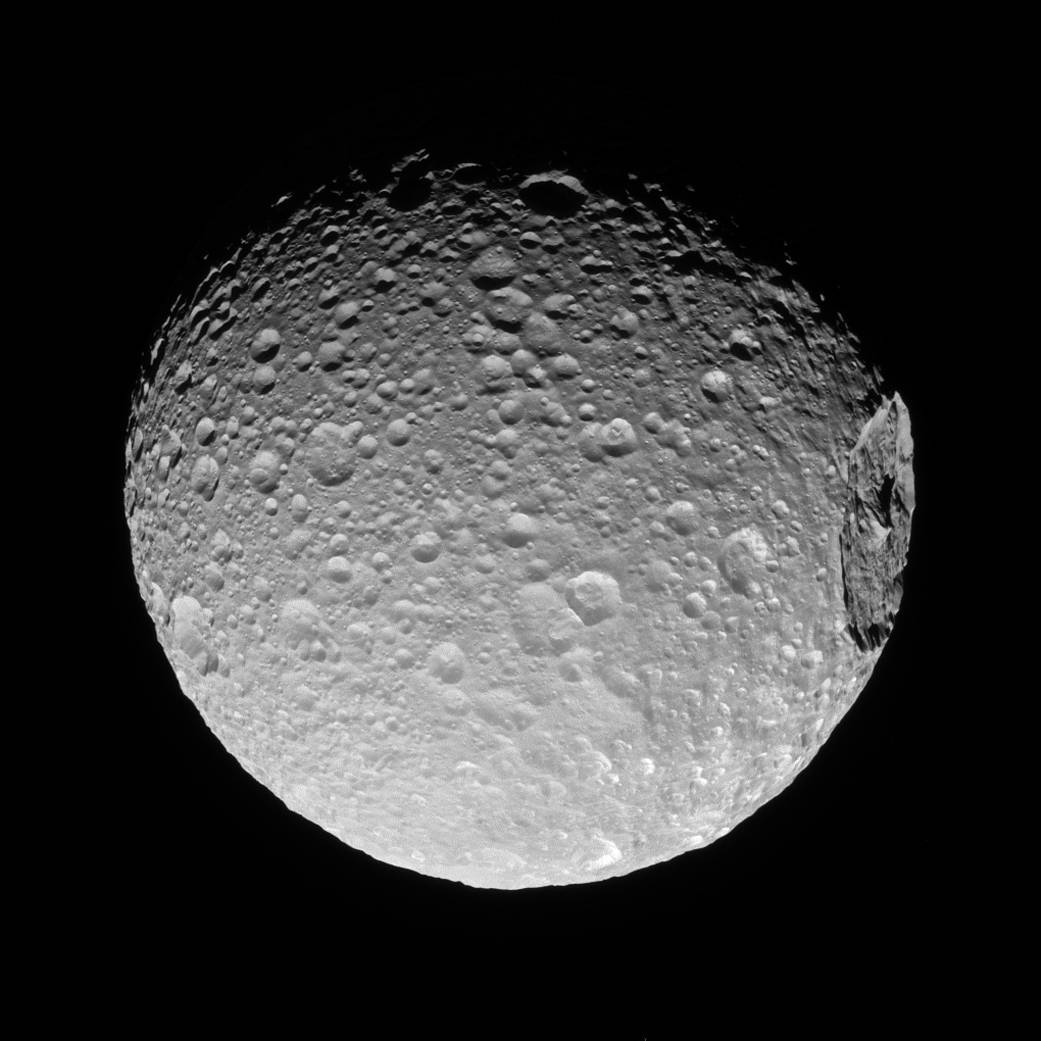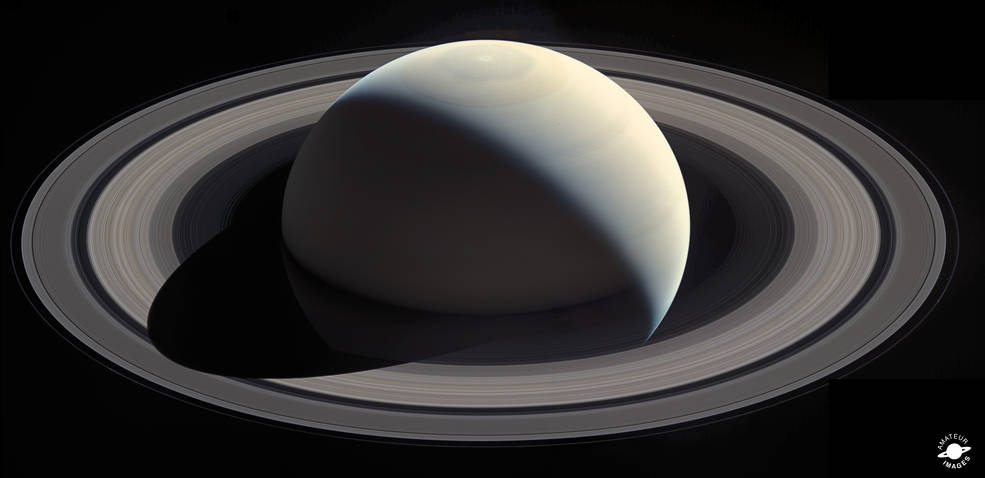オリジナル記事:Coy Dione
Dione’s lit hemisphere faces away from Cassini’s camera, yet the moon’s darkened surface features are dimly illuminated in this image, due to Saturnshine.
NASAの探査機カッシーニに面した土星の衛星ディオネの半球は、土星からの反射光で薄暗く照らされています。
Although direct sunlight provides the best illumination for imaging, light reflected off of Saturn can do the job as well. In this image, Dione (698 miles or 1,123 kilometers across) is above Saturn’s day side, and the moon’s night side is faintly illuminated by sunlight reflected off the planet’s disk.
この画像では太陽光の直射日光による反射が最も明るく反射してはいますが、土星からの輻射光もそれなりに薄明るく照らし出しています。この画像のディオネ(直径698マイル/1,123キロメートル)は、土星の昼間の面の上空にあって、ディオネの夜の部分が土星からの輻射光でかすかに明るくなっています。
This view looks toward the Saturn-facing side of Dione. North on Dione is up and rotated 8 degrees to the right. The image was taken in visible light with the Cassini spacecraft narrow-angle camera on Oct. 23, 2016.
この画像はディオネの土星に面している側のものです。上方がディオネの北の方角にあたり右に8度回転しています。 2016年10月23日にカッシーニ探査機搭載の狭角カメラで可視光の条件で撮影されました。
The view was obtained at a distance of approximately 313,000 miles (504,000 kilometers) from Dione. Image scale is 1.8 miles (3 kilometers) per pixel.
この画像はディオネからおよそ313,000マイル(504,000キロメートル)の距離で撮影されたものです。画像解像度は1ピクセルあたり1.8マイル(3キロメートル)です。
The Cassini mission is a cooperative project of NASA, ESA (the European Space Agency) and the Italian Space Agency. The Jet Propulsion Laboratory, a division of the California Institute of Technology in Pasadena, manages the mission for NASA’s Science Mission Directorate, Washington. The Cassini orbiter and its two onboard cameras were designed, developed and assembled at JPL. The imaging operations center is based at the Space Science Institute in Boulder, Colorado.
For more information about the Cassini-Huygens mission visit http://saturn.jpl.nasa.gov and http://www.nasa.gov/cassini. The Cassini imaging team homepage is at http://ciclops.org.
Credit: NASA/JPL-Caltech/Space Science Institute
Last Updated: Jan. 31, 2017
Editor: Tony Greicius


